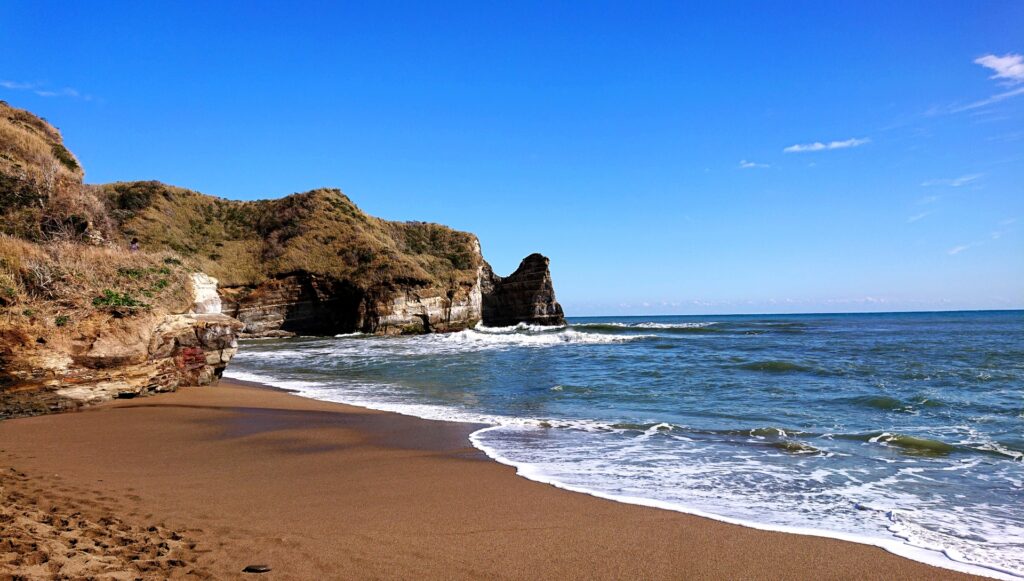The San Francisco was a Spanish galleon that sank off the coast of Onjuku in Chiba Prefecture, Japan, in 1609. As part of the Manila Galleon trade route, which was discovered by Spanish maritime explorer Andrés de Urdaneta in 1565, this ship played a crucial role in connecting the Spanish colonies in the Philippines with New Spain (modern-day Mexico). The route was integral to the exchange of goods such as silver, spices, and textiles across the Pacific and was intended to be used by San Francisco on its return trip to New Spain.

In July 1609, the San Francisco set sail from Cavite, Philippines, under the command of Rodrigo de Vivero, the former provisional governor of the Philippines. Its destination was Acapulco, New Spain (modern-day Mexico), but the journey was fraught with danger. Significantly off-course from its planned voyage on the Manila Galleon trade route, the galleon faced relentless storms and eventually succumbed to a violent typhoon near Japan’s coast. On the night of September 30, after 65 days at sea, the San Francisco ran aground near Iwawada (modern-day Onjuku) in Chiba Prefecture.
Figure 2 : 3D Concept Model of Galleon San Francisco


Survival and Aid from Japan
Out of approximately 400 people on board, about 300 survived the wreck. These survivors, including Rodrigo de Vivero, were met with remarkable hospitality from the locals. Female divers, known as Ama (海女), helped the survivors of the galleon who were washed ashore by warming their bodies with their own along with providing food and clothing.
Following the rescue efforts from the local population of Onjuku, Vivero was invited to meet the Shogun’s son, Tokugawa Hidetada, at Edo (modern-day Tokyo) and later with the Shogun, Tokugawa Ieyasu, at Sunpu Castle in Suruga Province (modern-day Shizuoka Prefecture). It is noted in Vivero’s accounts that he was shown great hospitality and received excellent treatment during his journey.
Meeting the Shogun, Vivero played a pivotal role in fostering diplomatic relations between Spain and Japan, marking an early and significant interaction between the two nations. Ieyasu ensured that the survivors were cared for and facilitated their safe return to New Spain. The return ship given to Vivero, named San Buena Ventura, was the first Western-style ship to ever be made within Japan and was constructed under the directions of Ieyasu’s advisor and English navigator, William Adams. In 1610, Vivero had used the ship to return back to New Spain carrying along a crew of 22 Japanese.

This event also highlighted Japan’s role in international relations during the Edo period, where they cautiously interacted with foreign nations despite their isolationist policies. The Spanish survivors’ positive experience paved the way for negotiations concerning trade and mutual aid between Spain and Japan.
In 1611, Sebastian Vizcaino, an envoy of Spain for King Philip III, had visited Japan to gift Ieyasu a gift from the king. The clock was a sign of gratitude crafted in 1581 by a Spanish clockmaker, Hans de Evalo. The clock is currently stored in Kunozan Toshogu and was noted to be Ieyasu’s favorite personal item.

The Treasure Hunt and Archaeological Mystery
The San Francisco carried valuable cargo intended for trade. Following the wreck, local villagers salvaged what they could from the ship, and rumors about treasure onboard attracted treasure hunters throughout the centuries. Despite these efforts and several archaeological investigations, the remains of the ship and much of its cargo have never been conclusively found. Some artifacts are believed to have washed away or been claimed by the sea, while others may still lie buried beneath sand and rock, awaiting discovery.
Ongoing Investigations
Modern archaeological efforts have focused on potential wreck sites around Onjuku, particularly in Tajiri Cove, where it is believed that parts of the ship drifted ashore. It is also hypothesized that any remains would be covered by a thick layer of sediment due to the terrain and high current of the waters. Our investigations, then, would begin at Onjuku and we aim to provide regular updates on the progress of our research, bringing to light the historical and cultural significance of this maritime disaster. By unearthing the San Francisco’s legacy, we hope to reveal new insights into the Manila-Acapulco trade route and its lasting impact on global history.

For our investigation, we appreciate any and all resources that could assist us in this goal. Please join the forum below or contact us directly by filling out the contact form here: Contact Us.


